FACIM: Mozambique's largest trade fair 90% ready for official opening next week
Mozambique proposes Development Bank under Finance Ministry, not Central Bank

FILE - For illustration purposes only. [File photo: (cropped) TVM]
Daniel Francisco Chapo’s election promise to create a Development Bank in the Republic of Mozambique is taking shape. The bank will help develop infrastructure and finance and better promote strategic projects for the progress of our country.
This week, the Ministry of Finance released the institution’s conceptual project, and the document will be subject to public debate starting next week.
In the draft published on the Ministry of Finance website, the government argues that Mozambique lacks a structured institutional vehicle that allows for efficient channelling of financing for transformative projects, as well as mobilizing local capital (pension funds, insurance companies, among others) with confidence and sustainability.
The Development Bank of Mozambique (BDM) therefore “emerges as a strategic response to the urgent need to boost development financing in the country”, filling market gaps and strengthening the state’s capacity to foster investments with measurable economic and social impact.
According to the government, Africa faces an estimated annual development financing deficit of US$250 billion, particularly in the infrastructure, energy, health, and education sectors.
In the case of Mozambique, the government states, despite an increase in Foreign Direct Investment (FDI) from US$2.51 billion in 2023 to US$3.55 billion in 2024, the country attracted only about 4% of the US$97 billion in FDI channelled to Africa in 2024. “This performance highlights Mozambique’s limited capacity to attract foreign capital, especially when compared to its development financing needs,” the Ministry of Finance comments.
“Furthermore, domestically, the Mozambican financial system is characterized by strong market concentration in three systemically important banks that hold more than 50% of the market share in loans, assets, and deposits; and a high non-performing loan (NPL) rate, which averages 8.24%—above the international threshold of 5%—and exceeds 40% in institutions such as BNI [Banco Nacional de Investimento] and Ecobank,” the government explains.
It also adds that Mozambique’s national financial system is characterized by restricted access to long-term financing for micro, small, and medium-sized enterprises (MSMEs), especially in the manufacturing sector. It also notes growing fiscal pressures, with a 69% increase in domestic debt payments in 2025, resulting in debt service delays in the last quarter of 2024, and a slowdown in economic growth, with real GDP falling from 5.3% in 2023 to 2.5% in 2024, affected by foreign exchange shortages and social instability.
The Development Bank of Mozambique would aim to attract and channel domestic and foreign resources into standardized and replicable strategic projects in the energy, infrastructure, agriculture, health, education and housing sectors; promote the development of micro, small, and medium-sized enterprises with accessible credit and technical assistance; promote investments in priority and sustainable sectors; reduce exchange rate risks; and diversify investment opportunities for domestic institutional investors.
Exceptional legal framework and governance model
While the justification emphasizes the theory advocated by the President of the Republic since the election campaign, it is in the legal framework (which should govern the new financial institution) and the governance model that the innovations lie.
The government advocates the creation of a new legal framework to accommodate the creation of the Development Bank of Mozambique, in which the Ministry of Finance “assumes the role of main supervisory entity”, and coordination with the central bank “limited to monitoring systemic risks.”
This, the executive argues, will allow for regulation aligned with the objectives of development financing; allow for more flexible rules regarding capital adequacy and liquidity; strong political alignment with the government’s development objectives; facilitate innovation and the structuring of blended finance; and full flexibility for instruments such as equity participation, guarantees and concessional credit.
As examples of the proposed model, the government cites the development banks of South Africa and China, and PT Sarana Multi Infrastruktur (Persero) of Indonesia, which are governed by specific legislation in their countries.
Creating the Development Bank of Mozambique under Law No. 20/2020 of December 31, which regulates credit institutions and financial companies, the government states, “would require compliance with traditional prudential standards (such as capital adequacy, liquidity, and provisioning), which would be inconsistent with its development and social mandate and the financing instruments it uses (such as equity participation and guarantees)”.
The government also adds that there is a “risk of excessive regulatory intervention or misalignment with the institutional mandate” and that “the Bank of Mozambique is not structured to supervise long-term, concessional development financing”. Examples of financial institutions created under these conditions include the development banks of the Czech Republic, Hungary, and Namibia.
Likewise, revising the current law to accommodate the creation of the Development Bank of Mozambique offers some regulatory and prudential freedom, which can be exercised within the limits permitted by current legislation, according to the government’s explanation.
However, it understands that “the solution rests on a weaker legal basis, as it depends on the discretionary power of the Central Bank, which could compromise the achievement of the purpose for which the BDM was created”.
Two possible models for shareholder structure
Regarding the shareholder structure, the draft presents two models: one in which the state is the sole shareholder and another in which the state holds 60% of the shares and the remainder are held by other entities, including Kuhanha, Africa50, and the African Development Bank (AfDB).
For the first case, the government explains that it guarantees “direct control over policies and simplified governance”, but that it “limits opportunities for mobilizing external capital, accessing specialized technical expertise, and strengthening transparency”.
The second model allows the Development Bank of Mozambique to attract development partners and institutional investors, strengthening financial sustainability, governance quality, and strategic alignment, “which is why this structure is recommended given the country’s context”.
Public consultation on the Development Bank of Mozambique initiative begins on September 3 and ends on September 30.






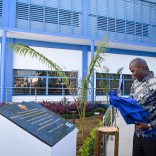
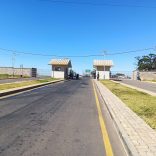
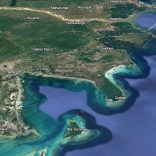
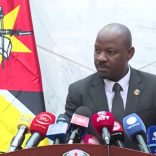
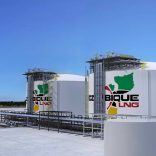

Leave a Reply
Be the First to Comment!
You must be logged in to post a comment.
You must be logged in to post a comment.